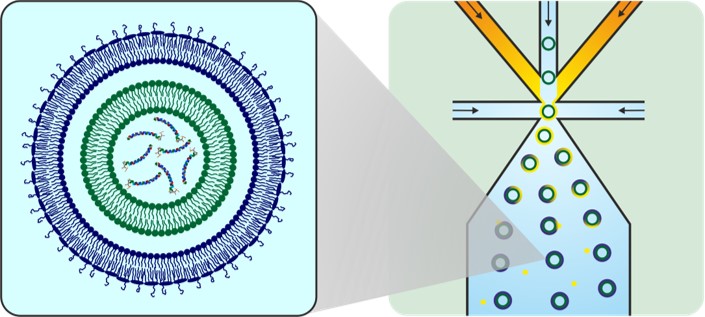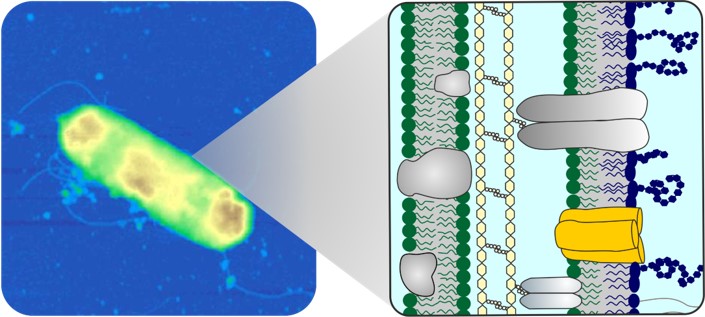Bottom-up designed synthetic bacteria – a tool to develop new antibiotic strategies
Prof. Dr. T. Gutsmann1), Forschungszentrum Borstel/Germany.
Abstract
The project aims on the production of symmetric and asymmetric as well as double-membrane liposomes to mimic bacterial envelopes based on a novel microfluidics platform (Figure 1).1)2)3) We want to build a sequential microfluidics setup allowing (i) to create symmetric and asymmetric liposomes, (ii) to prepare double-membrane liposomes, (iii) to fill the functionalized liposomes with antimicrobial drugs, and (iv) to store these liposomes for single liposome experiments in individual cavities. One major advantage of this approach is the generation of liposomes of homogenous diameters and lipid distributions. The double-membrane concept allows to reconstitute bacterial envelopes mimicking Gram-negative bacteria (Figure 2).

Figure 1. Concept of microfluidic generation of vesicular mimicries
The outer membrane is important for the interaction with the human immune system and with bacteria, e.g. in biofilms. The inner membrane can be functionalized in a way that the encapsulation and the release of antimicrobial drugs is optimized. This Trojan-horse concept allows to design new drug administration approaches.

Figure 2. Cell envelope of Gram-negative bacteria
Benefit for the community
The vision is to create an automated and alterable screening platform based on microfluidics that can help pharmaceutical companies to identify emerging resistance patterns at the very beginning of drug design and allow a more rapid action within the development process.
Visit the supervisors lab
A microfluidic platform for the characterisation of membrane active antimicrobials
Lab on a Chip 19, 837-844
| RSC Publishing |
The Beauty of Asymmetric Membranes: Reconstitution of the Outer Membrane of Gram-Negative Bacteria
Front. Cell Dev. Biol. 8, 586
| PubMed |


